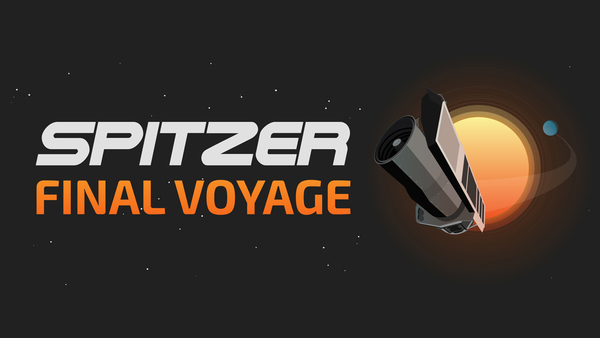
By Daniel Devost | August 3rd, 2019
My Spitzer story starts in 1999 when I was working on my PhD at the Space Telescope Science Institute in Baltimore. I received a letter from the Infrared Spectrograph (IRS) team at Cornell University encouraging me to apply for one of their position openings. They had seen my vitae at one of the AAS meetings earlier the same year.
I decided to apply, got an interview, and the next thing I knew, my eight months-pregnant wife and I were on our way to Ithaca, New York for the adventure of a lifetime: raising a family and working on one of NASA’s Great Observatories.
That was a dream come true for me. I have always seen NASA as an icon of excellence, so working for one of their projects was something I had always wanted. In our office we had Gene Kranz’s famous quote displayed on the wall, “Failure is not an option.” I read that quote every day to remind myself to always try to do the highest possible quality work in the shortest amount of time. In the long run, that paid off.
Before the launch, I was mainly involved in testing the instrument by making sure the detectors were running within specifications. One of the tests I remember most vividly is the “Brutus test.” The name fit the requirements of the activity pretty well. It was brutal. The whole telescope was tested in a giant vacuum chamber from end to end for the first time, and the results were going to be used to determine whether Spitzer was ready to move forward. My software had to run without a hitch and produce reliable numbers in a short amount of time—with almost no time to think or debug. It just had to work. I remember my plane ride to Boulder before that test. I could not get my eyes off my code; I was constantly reviewing it and trying to find bugs. It was a stressful time. In the end, things went as planned and Spitzer moved forward to a successful launch.
The launch was, of course, one of my most unnerving and yet satisfying moments with the IRS team. For us though, the work started after the launch with the In Orbit Checkout. This was the culmination of all the preparation and hard work we did before launch. We were going to see if the IRS worked in space.
I will always remember the first light of the IRS. All of us were gathered in a room looking intensely at one monitor. Here it comes and…flawless! The images looked very good. The spectrograph was working. We spent the next few months running all sorts of procedures to check the instrument. Almost everything worked as expected. Not only was the IRS working, but it was working beautifully. This was the beginning of five productive years for our instrument and 15 years of amazing science for Spitzer.
Overall, I spent seven years at Cornell working on the IRS and those were memorable years. Raising a family and participating in one of NASA’s greatest successes changed me forever. The work habits I developed to reach the level of excellence required by this kind of project are still with me today. I will always be immensely proud of what our team accomplished. Every discovery made with IRS data has a little bit of us in it.

 NASA’s Spitzer’s Space Telescope: Shaping Scientific Careers of Researchers and Future Space Telescopes
NASA’s Spitzer’s Space Telescope: Shaping Scientific Careers of Researchers and Future Space Telescopes
 Seeing Spitzer
Seeing Spitzer



